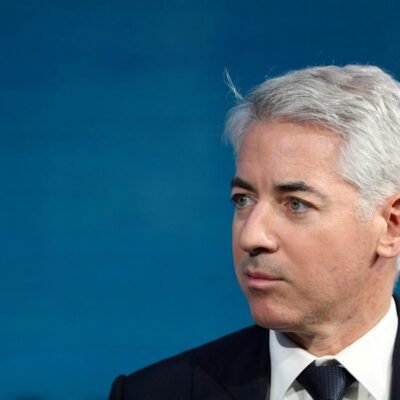Transatlantic airline staff are notorious sticklers nowadays when it comes to weighing passengers’ luggage, but suddenly there’s extra competition for space in the hold – and it comes from a very surprising quarter.
If you’ve taken a flight from London to New York in recent months, there’s a chance your suitcase of warm winter clothes and emergency teabags was loaded on the plane with something more precious still: gold bullion. And gold by the tonne.
Donald Trump’s threats of tariffs on all imports – this month, America’s President imposed a levy of 25 per cent on all steel and aluminium entering the US – has had a stark consequence for the international market in precious metals.
With gold already trading at record highs, intense demand has pushed its value on Wall Street still higher – up about 10 per cent so far this year – with traders attempting to factor in the cost of any prospective tariffs.
That has created a discrepancy, with prices remaining significantly lower in London, the other international hub for gold trading.
The current cost is hovering at about $2,900 (£2,300) per troy ounce (a measure used for precious metals about a tenth heavier than an imperial ounce, or 31g).
Since early December the price per troy ounce has been roughly $20 lower in London than in New York. This is driving traders to buy it more cheaply in the City in order to sell it on Wall Street (in a practice known as arbitrage).
At less than 1 per cent, the difference may seem small, but adds up very quickly: US bank JPMorgan has said that it plans to move more than $4billion in gold from London to New York in February, for example.
While most financial transactions can be made with a click of a computer mouse, these bullion bars have to be physically moved across the Atlantic both quickly and as cheaply as possible – and that means piles of gold bullion weighing up to five tonnes squeezing in alongside your suitcase in the cargo hold of a commercial flight.

Bullion bars have to be physically moved across the Atlantic quickly and cheaply – and that means piles of gold bullion weighing up to five tonnes squeezing in alongside your suitcase in the cargo hold of a commercial flight
The challenge for the Bank of England – London’s biggest gold repository – has been to extract the stuff from its nine fortress-like vaults. It holds about 420,000 gold bars, equivalent to 310 tonnes, a reserve worth at least £200 billion that is critical not only for the UK but for the global economy.
Just 5.4 per cent of it belongs to Britain, with the rest owned by foreign central banks and financial giants such as HSBC and JPMorgan.
The transatlantic latter-day gold rush has shades of The Italian Job as senior staff complain of armoured bullion trucks clogging up access to their Threadneedle Street headquarters in the City (but in this case they are not intending to steal it).
According to Bloomberg News, last month they dug out about 8,145 bars – an average of 370 per working day – but a backlog has built up. The wait to withdraw bullion from the Bank of England has gone from a few days to between four and eight weeks.
More than 150 tonnes of gold left the capital in January alone, according to the London Bullion Market Association. Of this, some 100 tonnes came from the Bank of England’s vaults (and the rest from commercial vaults).

Donald Trump’s threats of tariffs on all imports have had a stark consequence for the international market in precious metals
‘There are real logistical constraints and security constraints,’ Dave Ramsden, the Bank’s deputy governor, said last week.
‘Getting into the Bank for me this morning was a bit trickier because there was a lorry in the bullion yard. It takes time and the stuff is quite heavy.’
The Bank of England’s vaults are spread over two subterranean floors so extensive that trains on the London Underground’s Central line have to make a slight detour to avoid them.
Security is an understandable priority and the gold is protected by a battery of sophisticated security systems including advanced surveillance equipment, bomb-proof walls, iris-scanning devices and time-lock doors.
And no wonder, when even the US army base at Fort Knox – a byword for security where half the US government’s bullion is kept – has sparked concerns.
Last week, it seems at the insistence of anxious adviser Elon Musk, who is currently auditing federal government spending, President Trump said he would send officials to the facility in Kentucky ‘to make sure the gold is there’. His treasury secretary later confirmed that it was.

At the insistence of his adviser Elon Musk, President Trump said he would send officials to Fort Knox, where half the US government’s bullion is kept, ‘to make sure the gold is there’. His treasury secretary later confirmed that it was

Inside the Bank of England vaults, where heavily vetted staff move the gold, weighing 400 troy ounces or 12.5kg per bar, and has to be ‘dug out’ (as the Bank calls it) and loaded onto pallets before being wheeled up from the vaults
Inside the Bank of England vaults are 15 heavily vetted staff who need to be fairly muscular, as each bar weighs 400 troy ounces, or 12.5kg, and has to be ‘dug out’ (as the Bank calls it) and loaded onto pallets before being wheeled up from the vaults.
The bars are not interchangeable: each is specifically numbered and belongs to a particular customer. Finding and removing them involves no small amount of shifting of pallets.
Even when the exporters do finally get hold of their gold, it’s not simply a matter of shuttling the ingots to Heathrow in a blast-proof van.
Unfortunately, New York’s gold exchange requires smaller-sized ingots (of either 100oz or 1kg) to those accepted in the City, which means London bullion must first be sent to refiners in Switzerland, where it is melted down and recast. Alternatively, refiners will sometimes bring the smaller ingots to the capital and swap them out.
Bank of England chiefs insist they have the sudden demands on their vaults under control, though US financiers have been grumbling that time is money for the banks and dealers who want to move their holdings, and that the delivery system seems rather antiquated.
The gold rush, which in fact began with the start of the Ukraine war, accelerated after Trump was elected last November and the financial world realised the tariffs he had long threatened could convulse the global economy.
Even if the President doesn’t impose a levy – he has not specifically said he intends to and some experts doubt he will – analysts say gold would outperform other investments in the event of an international trade war, because it is seen as a safe-haven store of value.
This is why there are now more than 1,000 tonnes of gold (worth more than £65 billion) stockpiled in the vaults of the Commodity Exchange in the Big Apple – more than double the amount before November’s presidential election.
The Royal Mint states that, while the value of sterling is no longer linked to the size of Britain’s gold reserves – as it was until 1931 when the UK was on the ‘gold standard’ – the commodity remains a ‘crucial’ indicator of the country’s wealth.
‘These reserves act as a financial safety net supporting the value of the national currency and providing a buffer against economic and financial instability,’ states the Mint on its website.
Gordon Brown definitively proved the dangers of selling off Britain’s gold reserves when, as Chancellor in 1999, he sold off 401 tonnes and, said analysts, cost the country £21 billion.
Other countries have been keen to bolster their holdings. China’s central bank embarked on a gold-buying spree starting back in October 2022, sparking fears that President Xi was stockpiling in preparation for an invasion of Taiwan – to guard its economy against Western sanctions. It now officially holds 2,285 tonnes – though it could have far more.
All this gold stockpiling raises important questions: should we be worried that the Americans are helping themselves to the gold reserves stored in London?
And is the average UK customer suddenly going to find it hard to buy a gold bangle or a new ring?
Bank of England officials have been reassuring on both counts, insisting that there’s still plenty of gold to go around. And, after
all, these are not the UK Government’s own gold reserves that are being sent to New York, but those owned by banks.
‘There’s still plenty of gold,’ the Bank’s governor Andrew Bailey said earlier this month.
Meanwhile, experts are left marvelling at how, in this brave new financial world of instant online transactions, you can still make a quick buck lugging heavy pallets of gold bullion onto a passenger plane and flying them across the ocean.





